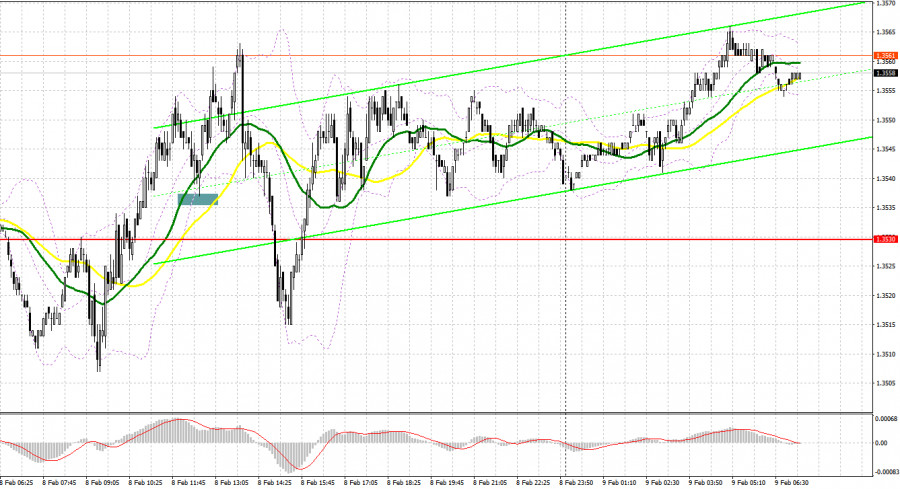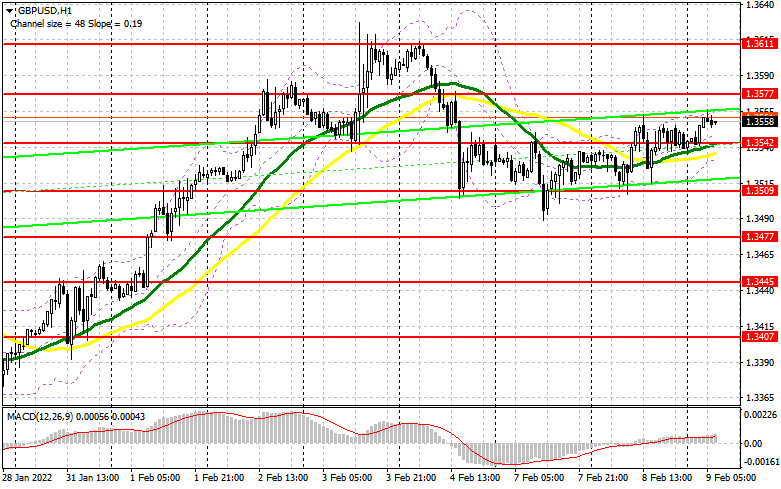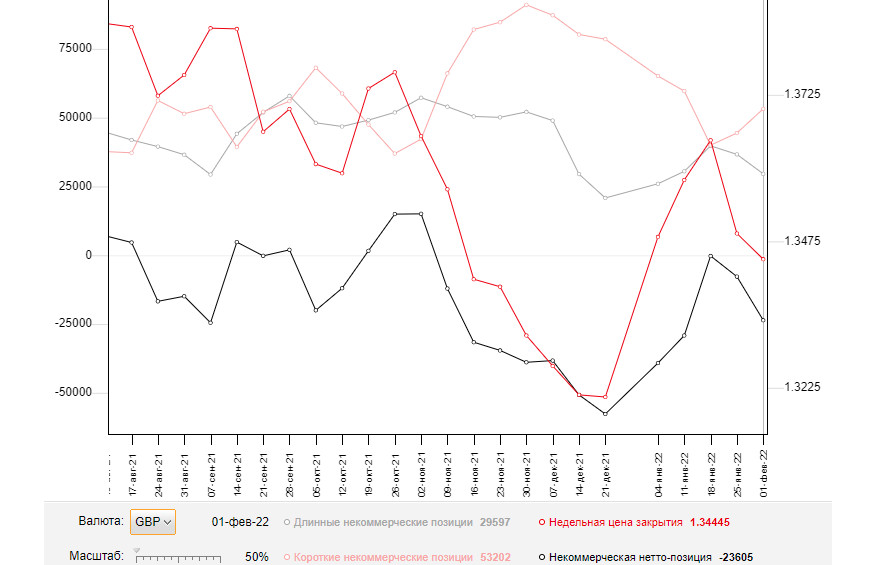What is needed to open long positions on GBP/USD
Yesterday, the pound sterling was quite volatile. However, there were only few signals to enter the market. Let's take a look at the 5-minute chart and figure out what happened. In my morning article, I highlighted the resistance level of 1.3536 and recommended taking decisions with this level in focus. I also mentioned that the lack of economic reports might fuel demand for the pound sterling. I also pointed out that if the British currency broke above 1.3536, traders would increase long positions. This scenario came true. After a breakout of 1.3536 and a downward test, there were many entry points into long positions. As a result, the pair gained about 25 pips. In the afternoon, despite the revision of the technical indicators, I was unable to wait for the formation of entry points into the market.

The bulls managed to take control yesterday. They will try to retain it today. The economic calendar remains empty. It may help the bulls to push the pair to the resistance level of 1.3577. However, bears are not ready to give up. This is why bulls and bears will have to fight for this level. Of course, the most important task for today will be to protect the support level of 1.3542. At this level, moving averages are located in the positive territory. If the pair breaks above this range, it will resume a steady upward movement as it did last week. It is crucial for the price to form a false breakout there. It will give the first entry point into long positions. BoE chief economist Hugh Peel will give a speech. His statements are likely to be hawkish. Apart from that, the BoE sticks to an aggressive stance on monetary policy, which is bullish for the pound sterling. If so, the pound sterling may strengthen even more versus the US dollar. The price also needs to break through 1.3577 and perform an upward test. It will give an additional buy signal. The price may return to 1.3611. After that, it is likely to approach the new February highs of 1.3656 and 1.3697. I recommend locking in profits at this level. In case of a decline in GBP/USD during the European session and a lack of activity at 1.3542, it is better to refrain from opening long positions on risky assets. I would advise you to wait for the test of the next important level of 1.3509. Only the formation of a false breakout will give an entry point to long positions. It is recommended to open long positions on the pound sterling immediately on a rebound from 1.3477 or even a lower low of 1.3445. Bear in mind a 20-25 pip intraday correction.
What is needed to short positions on GBP/USD
Bears prefer sitting on the sidelines now. They are waiting for the US inflation report, which is due tomorrow. There are no reasons now for opening short positions on the pound sterling. Today, sellers need to protect 1.3577. The future trajectory of the pair depends on this level. An unsuccessful consolidation above this level forms the first entry point into short positions. It may trigger a downward correction of the pair after yesterday's attempt by the bulls to gain momentum. The price could decline to the support level of 1.3542, which acts as the medium border of the sideways channel formed this week. The breakout and an upward test of 1.3542 after the speech of the BoE policymaker will give an additional entry point for short positions. If this scenario comes true, the pound sterling is expected to fall to 1.3477 and 1.3445. I recommend locking in profits at this level. If the pair grows during the European session and there is no activity at 1.3577, it is better to refrain from opening short positions until the pair hits the resistance level of 1.3611. Besides, the economic calendar is empty. I would also advise you to open short positions there only in case of a false breakout. You can sell GBP/USD immediately on a rebound from a high of 1.3656 or even a higher high of 1.3697. Please, do not forget about a 20-25 pip intraday correction.

COT report
The COT reports (Commitment of Traders) for February 1 showed a sharp increase in short positions and a drop in long ones. It made the market more bearish. However, the report does not take into account the results of the Bank of England meeting, namely the key rate hike. Nevertheless, it did not help the pound to develop a rally. Traders are well aware that the regulator took a tougher stance on monetary policy to curb rising inflation. Given that the UK economy is going through hard times and at any moment the pace of economic growth may slow down, the British currency did not advance considerably following the interest rate hike. On top of that, the Fed is also expected to raise the benchmark rate in March this year, which will be bearish for GBP/USD. Some analysts believe that the central bank may resort to a more aggressive stance and raise the key rate by 0.5% at once, rather than by 0.25%. The US dollar is sure to take advantage of it. The COT report for February 1 revealed that the number of long non-commercial positions decreased from to 29,597 from 36,666, while the number of short non-commercial positions rose to 53,202 from 44,429. It triggered an even greater increase in the negative non-commercial net position to -23,605 from -7,763. The weekly closing price dropped to 1.3444 from 1.3488.

Signals of technical indicators
Moving averages
GBP/USD is trading above 30- and 50-period moving averages. It means that the bulls don't give up attempts to carry on with an upward movement.
Remark. The author is analyzing the period and prices of moving averages on the 1-hour chart. So, it differs from the common definition of classic daily moving averages on the daily chart.
Bollinger Bands
A breakout of the upper border at about 1.3565 will trigger a new bullish wave of GBP. Alternatively, a breakout of the lower border at about 1.3530 will escalate pressure on GBP/USD.
Definitions of technical indicators
- Moving average recognizes an ongoing trend through leveling out volatility and market noise. A 50-period moving average is plotted yellow on the chart.
- Moving average identifies an ongoing trend through leveling out volatility and market noise. A 30-period moving average is displayed as the green line.
- MACD indicator represents a relationship between two moving averages that is a ratio of Moving Average Convergence/Divergence. The MACD is calculated by subtracting the 26-period Exponential Moving Average (EMA) from the 12-period EMA. A 9-day EMA of the MACD called the "signal line".
- Bollinger Bands is a momentum indicator. The upper and lower bands are typically 2 standard deviations +/- from a 20-day simple moving average.
- Non-commercial traders - speculators such as retail traders, hedge funds, and large institutions who use the futures market for speculative purposes and meet certain requirements.
- Non-commercial long positions represent the total long open position of non-commercial traders.
- Non-commercial short positions represent the total short open position of non-commercial traders.
- The overall non-commercial net position balance is the difference between short and long positions of non-commercial traders.












